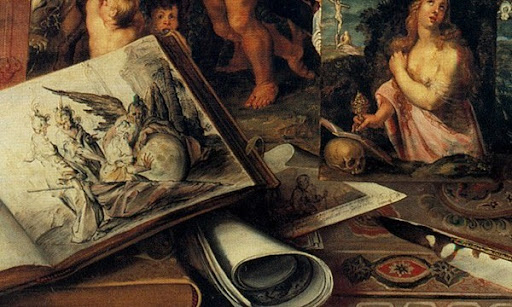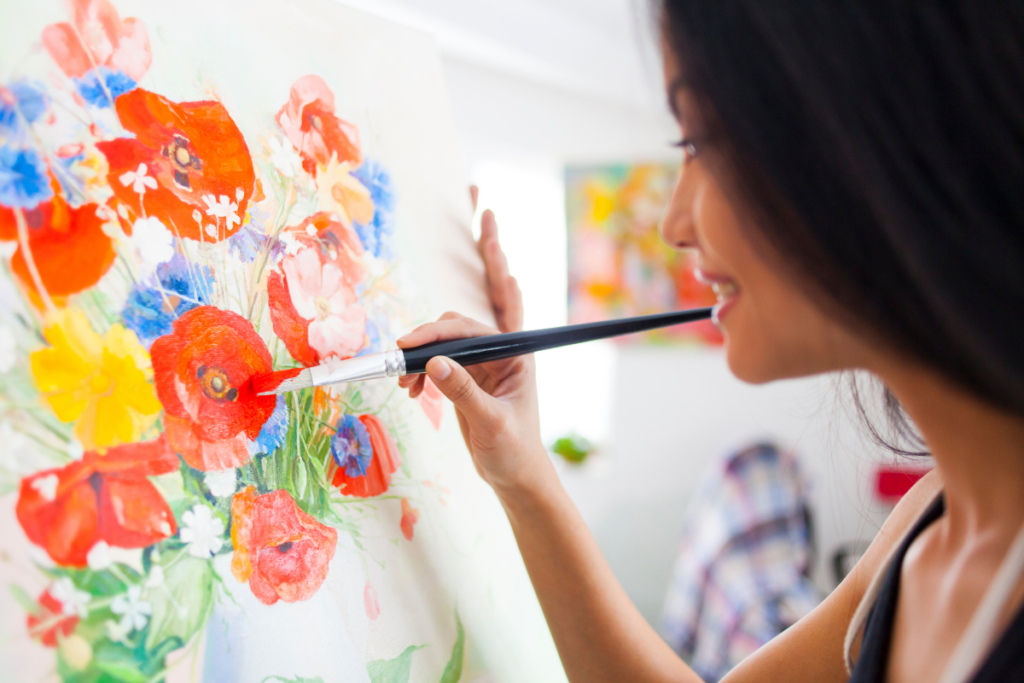Becoming a professional artist isn’t just about picking up a paintbrush or a camera—it’s a commitment to honing your craft, navigating the art world’s business side, and persevering through challenges.
It’s more than just making art; it’s about developing skills, knowledge, and habits that will sustain your career.
This journey involves acquiring business acumen to support yourself financially, cultivating traits like perseverance and discipline, and maintaining unwavering dedication to your artistic path.
In this guide, we’ll delve into the essential steps to help you kickstart your career as a professional artist.
What Is A Professional Artist?

A professional artist is someone who makes art for a living. They can be painters, sculptors, illustrators, or craft artists.
Their work might be displayed in galleries or sold to collectors. They could also be hired to create specific pieces, like portraits or illustrations for books and TV shows. Some work with digital art for games or movies.
Art directors are also part of this group, designing the look of things like packaging and magazines.
To become a professional artist, you might need a high school diploma, but a bachelor’s degree is often recommended, especially for jobs like multimedia artists and art directors.
Their main job is to visually express ideas using different materials and techniques, like drawing or digital design, and to keep a portfolio of their work.
How To Become A Professional Artist?

Becoming a professional artist involves a blend of passion, skill development, and strategic steps.
First and foremost, immerse yourself in art. Experiment with various mediums and styles to discover your strengths and preferences.
Seek out formal education or mentorship to refine your techniques and gain valuable insights. Practice consistently to hone your craft and develop a unique artistic voice.
Additionally, build a portfolio showcasing your best work to demonstrate your talent and range.
Network with fellow artists, join art communities, and attend exhibitions to expand your connections and opportunities. Embrace constructive criticism and continuously strive for improvement.
Lastly, be proactive in promoting your work through social media, galleries, and other platforms to attract clients and opportunities.
Remember, perseverance and dedication are key on the journey to becoming a professional artist.
Hone Your Skills
- Take classes and practice regularly to improve your artistic abilities.
- Study expert work to learn new techniques and approaches.
- Aim for a level of skill that sets your work apart from others.
Test Your Work
- Enter your best pieces into local art shows to gauge audience reaction.
- Seek feedback from unbiased sources to evaluate the quality and appeal of your art.
- Observing how people respond to your work can provide valuable insights.
Discover Your Strengths
- Identify what subjects or styles come more naturally to you.
- Experiment with different mediums and subjects to find your niche.
- Focus on areas where you excel and feel passionate.
Develop a Body of Work
- Create a cohesive collection of artwork showcasing your talent and style.
- Aim for around ten to fourteen pieces of high-quality work.
- Ensure consistency in style and subject matter across your portfolio.
Learn Artwork Photography

- Capture high-quality images of your artwork for online and promotional purposes.
- Use proper lighting and avoid blurriness to showcase your work accurately.
- Crop images to focus solely on the artwork, excluding any distracting elements.
Create a Basic Website
- Establish an online presence by building a professional website.
- Showcase your artwork, provide information about yourself, and include contact details.
- Utilize website building platforms like Wix, Weebly, or SquareSpace for simplicity.
Start an Artwork Database

- Maintain a comprehensive database to organize your artwork and exhibition history.
- Consider using software like Artwork Archive to track your career progress.
Build Your Resume
- Gain exposure by participating in local art shows, group exhibits, and collaborations.
- Approach coffee shops or small venues to display your work publicly.
- Begin establishing a reputation within your local arts community.
Expand Your Marketing Efforts
- Craft an artist statement and biography to convey your artistic vision and background.
- Upgrade your website to a personalized domain name for a more professional image.
- Determine pricing strategies and create business cards to promote your work.
Increase the Quality of Venues and Groups
- Aim for higher-end exhibits and prestigious art associations as your skills progress.
- Consider entering national or international shows to broaden your exposure.
- Seek solo exhibitions at reputable galleries or venues to elevate your profile.
Present Yourself Professionally
- Maintain a polished appearance and demeanor when engaging with the art community.
- Ensure your artwork is displayed attractively with professional framing and presentation.
- Invest in high-quality marketing materials to leave a positive impression.
Decide on Your Career Direction
- Evaluate various paths such as exhibitions, gallery representation, teaching, or commissions.
- Explore different opportunities and network with fellow artists to gain insights.
- Focus your efforts on two or three career paths that align with your goals and interests.
Conclusion
In conclusion, the journey to becoming a professional artist is a multifaceted one, requiring dedication, skill development, and strategic planning. It’s not just about creating art; it’s about cultivating business acumen, networking, and continuously honing your craft.
By immersing yourself in art, building a strong portfolio, and actively promoting your work, you can pave the way for a successful career in the arts. Remember, perseverance and passion are your greatest allies on this creative journey.
So, embrace the process, stay committed to your vision, and let your artistic voice shine through.


Leave a Reply